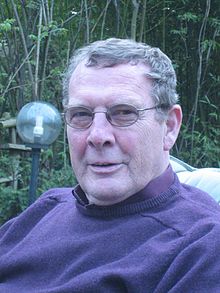Alexander Cools | |
|---|---|
 | |
| Born | 1941 |
| Died | 7 September 2013 (aged 71) Nijmegen, The Netherlands |
| Nationality | Dutch |
| Alma mater | Radboud University Nijmegen |
| Known for | Research on dopamine and the basal ganglia |
| Awards | Distinguished Achievement Award (EBPS) |
| Scientific career | |
| Fields | Psychoneuropharmacology |
| Institutions | Radboud University Nijmegen |
| Thesis | The Caudate Nucleus and Neurochemical Control of Behaviour: The Function of Dopamine and Serotonin in the Caput Nuclei Caudati of Cats (1973) |
| Doctoral advisor | Jacques van Rossum, Jo Vossen |
| Signature | |
Alexander ("Lex") Rudolf Cools (1941 in The Hague – 7 September 2013 in Nijmegen) was a Dutch behavioral pharmacologist.
He obtained his Ph.D. under the supervision of Jacques van Rossum and Jo Vossen in 1973 at the Radboud University Nijmegen,[1] where he was a professor from 1985 until his retirement in 2006.[2][3] In 2014, a special issue of the scientific journal Behavioural Pharmacology was dedicated to his memory.[4] Cools was one of the founders of the European Behavioural Pharmacology Society and its second president.[3] In 2003 he received that society's Distinguished Achievement Award.[3]
In 1976, Cools was the first to propose the existence of different types of dopamine receptors,[5] an essentially correct claim that initially was generally dismissed.[3]
Besides his work on dopamine, Cools is mostly known for his work on the basal ganglia[2][3][4] and the dorsal and ventral striatum.[6]
References[edit]
- ^ Cools, A.R. (1973). The Caudate Nucleus and Neurochemical Control of Behaviour: The Function of Dopamine and Serotonin in the Caput Nuclei Caudati of Cats (Ph.D.). Drukkerij Brakkenstein. LCCN 76379116. OCLC 001179054.
- ^ a b Ellenbroek, Bart A.; Homberg, Judith; Verheij, Miche l; Spooren, Will; Van Den Bos, Ruud; Martens, Gerard (2014). "Alexander Rudolf Cools (1942–2013)". Psychopharmacology. 231 (11): 2219–2222. doi:10.1007/s00213-014-3583-5. PMID 24770629.
- ^ a b c d e Robbins, Trevor (2015). "Alexander R. Cools (1941–2013)". Behavioural Pharmacology. 26 (1–2): 4–5. doi:10.1097/FBP.0000000000000101. PMID 25692200. S2CID 10471063.
- ^ a b Willner, Paul; Bergman, Jack; Vanderschuren, Louk; Ellenbroek, Bart (2015). "The behavioural pharmacology of the basal ganglia". Behavioural Pharmacology. 26 (1–2): 1–2. doi:10.1097/FBP.0000000000000125. hdl:1874/314557. PMID 25539481. S2CID 5455276.
- ^ Cools, AR; van Rossum, JM (1976). "Excitation-mediating and inhibition-mediating dopamine-receptors: a new concept towards a better understanding of electrophysiological, biochemical, pharmacological, functional and clinical data". Psychopharmacologia. 45 (3): 243–254. doi:10.1007/bf00421135. PMID 175391. S2CID 40366909.
- ^ van den Bos, Ruud (February 2015). "The dorsal striatum and ventral striatum play different roles in the programming of social behaviour: a tribute to Lex Cools". Behavioural Pharmacology. 26: 6–17. doi:10.1097/FBP.0000000000000110. PMID 25545961.
External links[edit]